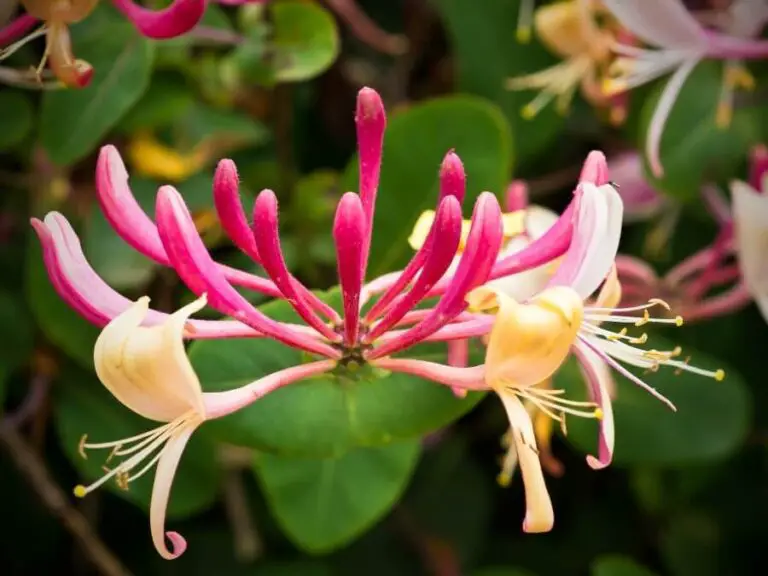31 Plants That Look Like Aloe Vera And Their Benefits (With Pictures)
If you’re fascinated by the numerous benefits of aloe vera, you’re not alone! This versatile plant is renowned for its healing properties, making it a popular choice among gardeners and wellness enthusiasts alike. However, if you don’t have a green thumb or live in an area where aloe vera plants grow naturally, don’t worry – there are plenty of alternatives that share similar characteristics and benefits.
In this blog post, we’ll delve into the world of succulents and explore 31 plants that bear a striking resemblance to aloe vera, each with its unique features and advantages.
10 Plants That Look Like Aloe Vera
Agave plant.
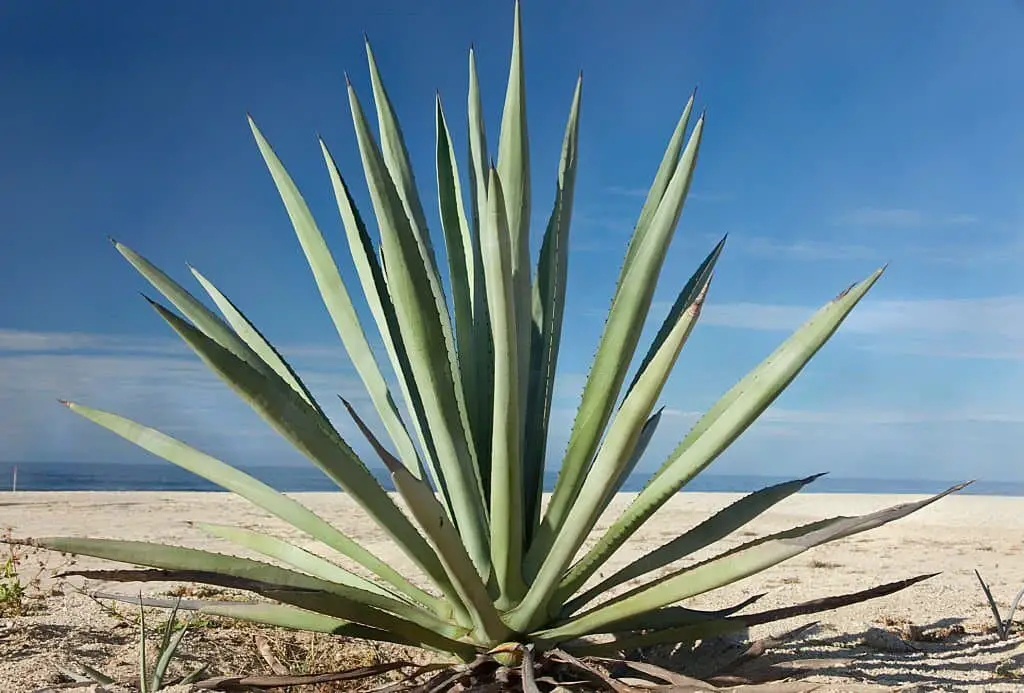
The agave plant, a succulent native to North America’s deserts, boasts thick, fleshy leaves that have adapted to store water, making it an exemplary species for arid environments. Its leaves are not only prized for their water-storing capabilities but also notable for their sharp, spiked edges. These unique features have led to the agave plant being utilized in a variety of ways, including the production of ropes and fabric.
Additionally, the agave plant is a key component in the creation of tequila. Moreover, it has played a vital role as a source of sustenance and medicine for indigenous communities across the Americas. Its medicinal properties have been employed to treat a range of ailments, such as wounds, burns, and stomach issues. Furthermore, the agave plant has been used in traditional Mexican folk medicine to combat diabetes, highlighting its significance in both modern and ancient cultures.
Ariocarpus.
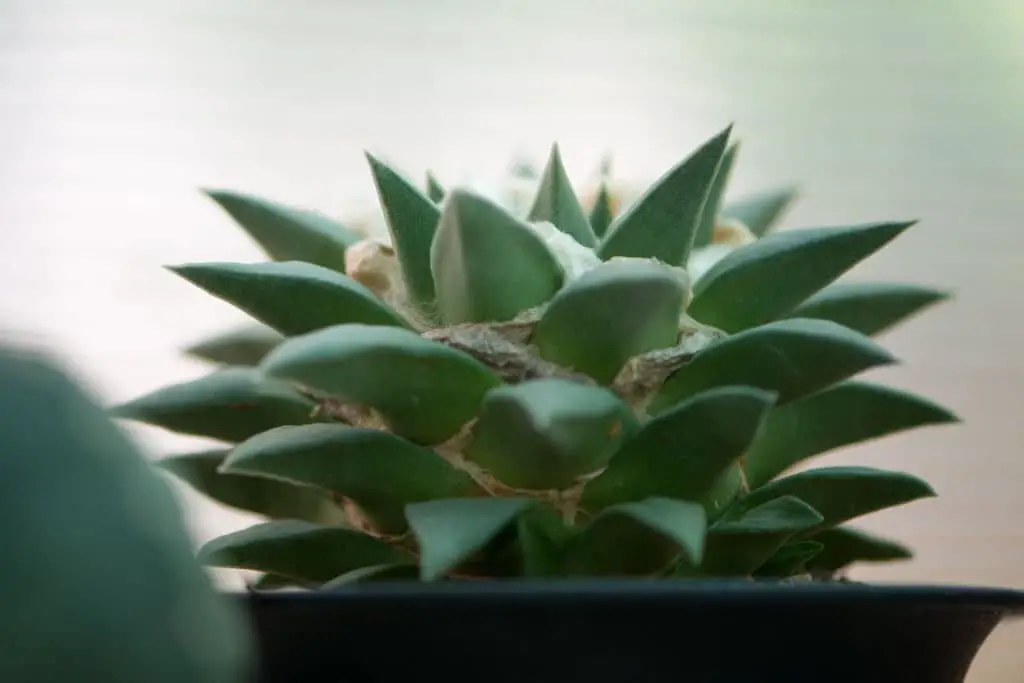
Ariocarpus, often referred to as living rocks, are small and slow-growing succulents that bear a striking resemblance to miniature cacti. While they’re frequently mistaken for aloe vera plants, their true affinity lies with peyote and other mescaline-containing cacti. Despite their unusual appearance, these plants boast several benefits that make them an ideal choice for both indoor and outdoor gardens.
Native to the deserts of Mexico and Texas, ariocarpus have adapted to thrive in a wide range of habitats. They’re renowned for their extraordinary drought tolerance, able to survive extended periods without water. Furthermore, they’re heat-tolerant and can withstand full sun exposure, rendering them an excellent selection for hot, arid climates.
One of the most fascinating aspects of ariocarpus is their unique ability to store water within their stems and leaves, granting them remarkable resistance to drought and heat stress – making them a top pick for xeriscaping. Additionally, these plants are relatively slow-growing, necessitating minimal maintenance and care.
Bergeranthus.
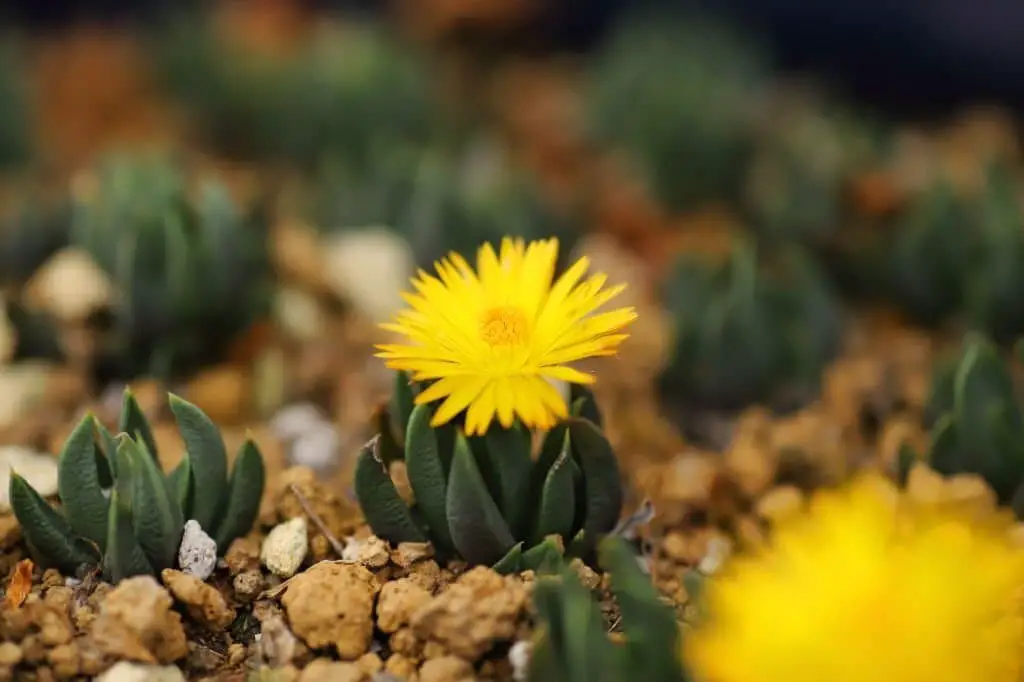
Bergeranthus, with its striking appearance, is frequently mistaken for aloe vera. Belonging to the Aizoaceae family and hailing from South Africa, this succulent thrives in arid environments due to its thick, water-storing leaves. As a low-maintenance option, Bergeranthus is ideal for those seeking to introduce some greenery into their home without worrying about frequent watering.
Beyond its unique aesthetic, this plant boasts impressive healing properties, having been utilized medicinally for centuries.
Dryland Bromeliads (Dyckia and Hechtia).
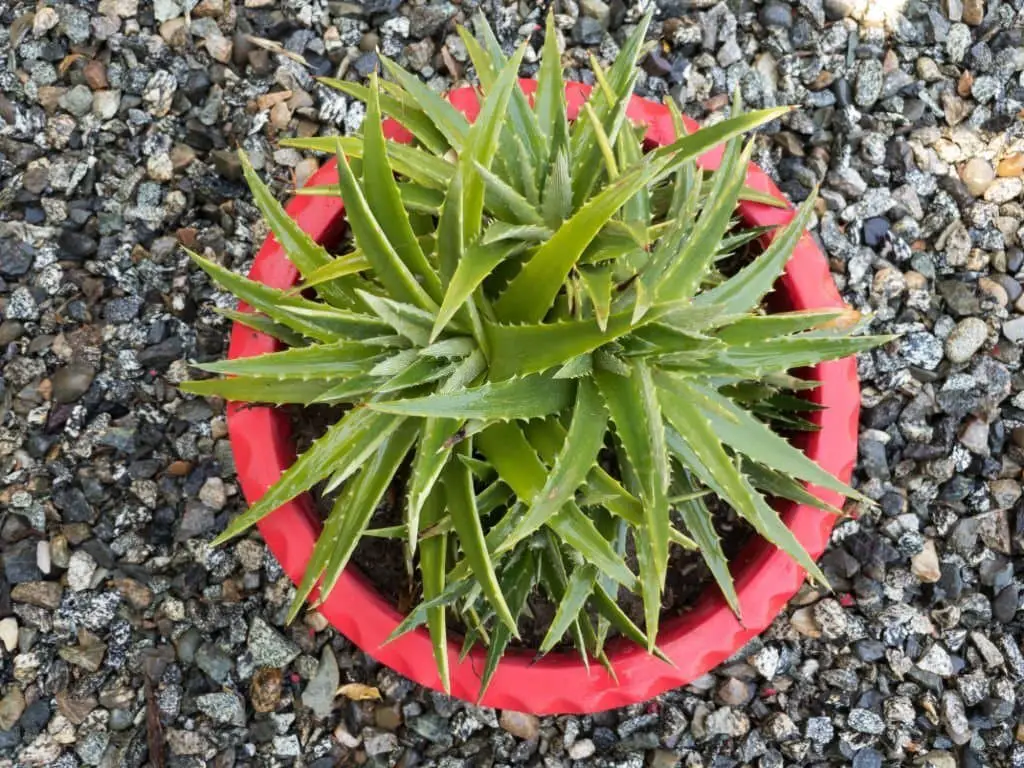
The Bromeliad family boasts a remarkable resemblance to pineapples, inheriting many of their advantageous traits. These plants thrive with minimal upkeep, requiring little water or fertilization once they’re established. One notable feature is the production of offsets, also known as ‘pups,’ which can be detached and replanted to generate new specimens.
Bromeliads exhibit an impressive diversity in terms of color palette and size, making them versatile for various applications such as groundcover, containers, or accent plants within a landscape. Originating from South America, particularly Brazil, Dyckia species are well-suited to full sun and well-drained soils. However, their sharp leaf spines can make handling a bit challenging. Hechtia, on the other hand, comprises over 100 species native to Mexico and the southwestern United States.
Preferring partial sun and well-drained soils, these plants demonstrate resilience in poor soil conditions, salt, and wind exposure – but are sensitive to excessive moisture.
Faucaria.
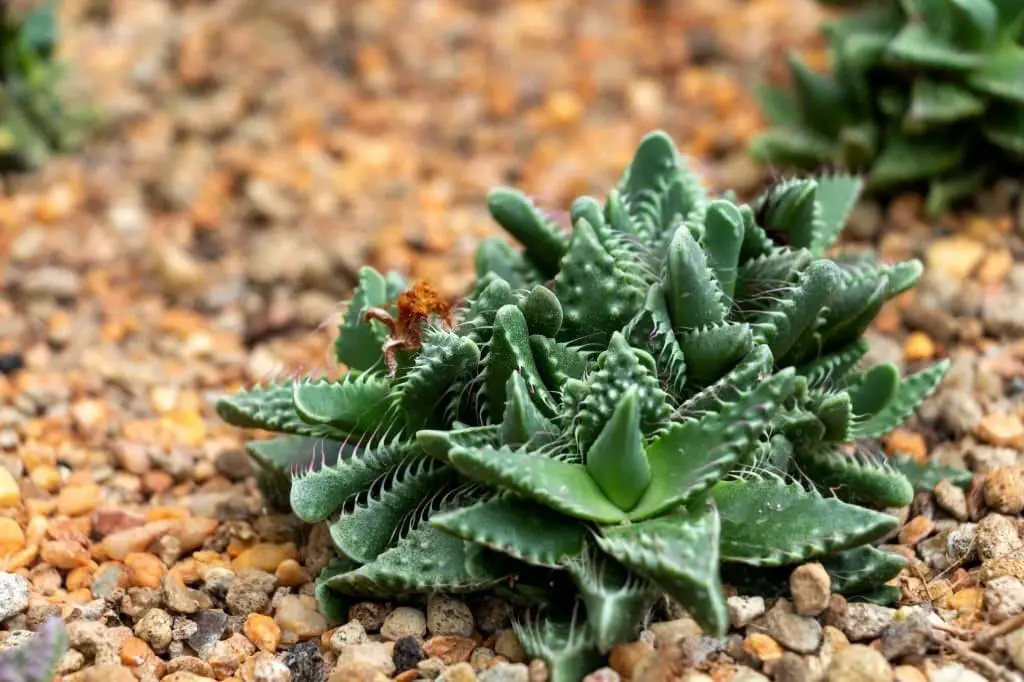
Faucaria, a genus comprising approximately 30 species of leaf-succulent plants, native to southern Africa, boasts an impressive array of characteristics that set them apart from other plant families. With the majority of species found in the Cape Provinces, a few scattered throughout northern South Africa, and one solitary representative in Namibia, Faucaria felina – also known as Tiger’s Jaw or Cat’s Mouth – stands out as the most iconic member of this genus.
The plants’ fleshy, triangular leaves, which grow in pairs and feature serrated margins, are an unmistakable hallmark of Faucaria species. As the seasons transition to winter, these succulents produce vibrant yellow or orange flowers that add a splash of color to their surroundings. While some Faucaria species have been cultivated for ornamental purposes, others possess medicinal properties that have garnered attention from both botanists and indigenous communities.
One notable example is Faucaria felina, which has been employed to alleviate stomach troubles, diarrhea, and dysentery. The plant’s leaves are also applied topically as a poultice for wounds and bites, with some even suggesting it possesses anti-inflammatory properties.
Gasteria.
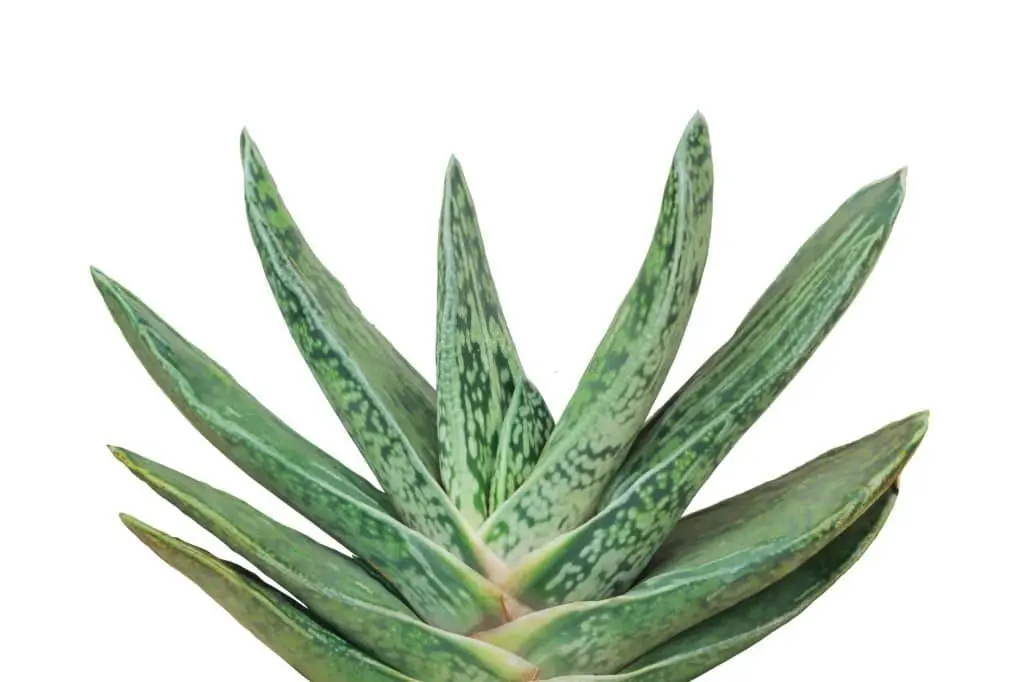
You might not be familiar with the name Gasteria, but it’s likely you’ve come across this succulent before without knowing what it was. Its appearance is uncannily similar to aloe vera, except it tends to be smaller and features more pointed, less fleshy leaves. While its resemblance to aloe vera might be striking, Gasteria isn’t actually related to the aloe plant at all. Instead, it’s part of the Asphodelaceae family, which also includes amaryllis and ginger lily.
Like aloe vera, Gasteria is incredibly resilient in dry or rocky soil conditions and requires minimal maintenance to thrive indoors with bright, indirect sunlight.
Haworthia.
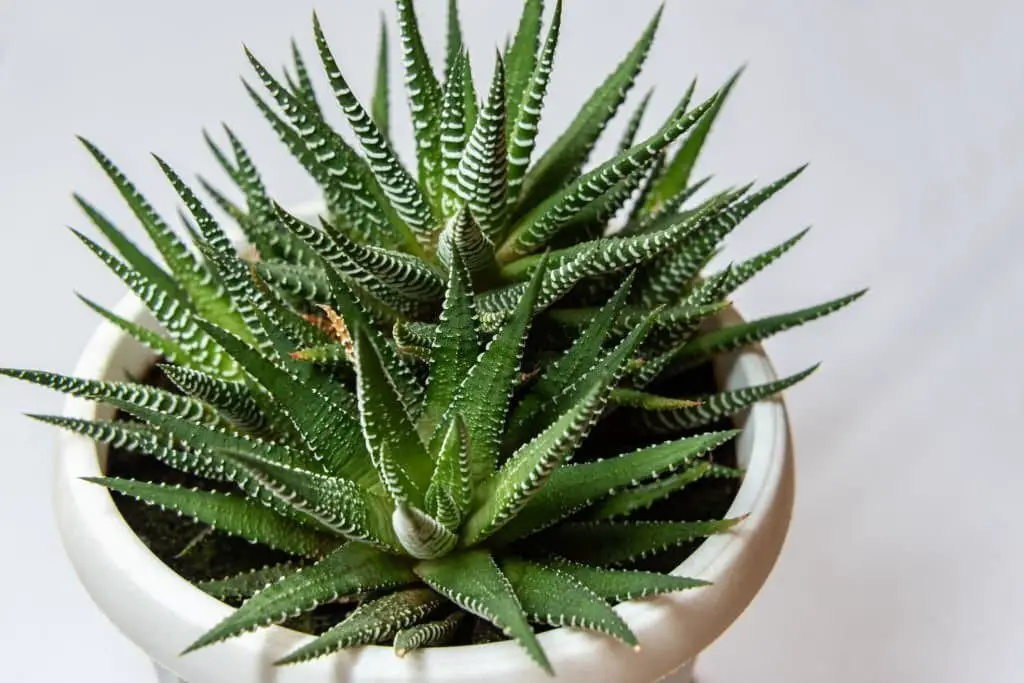
While aloe vera may be the most well-known succulent with healing properties, its cousin Haworthia shares many of its impressive attributes. Despite being unrelated to true aloes, Haworthia’s thick, fleshy leaves bear an uncanny resemblance to their aloe counterparts. Moreover, both plants boast a treasure trove of vitamins and minerals, including A, C, E, calcium, and magnesium.
When applied topically, Haworthia can effectively calm burns, cuts, and other wounds, making it an excellent choice for those seeking a plant that combines visual appeal with practical benefits.
Hechtia.
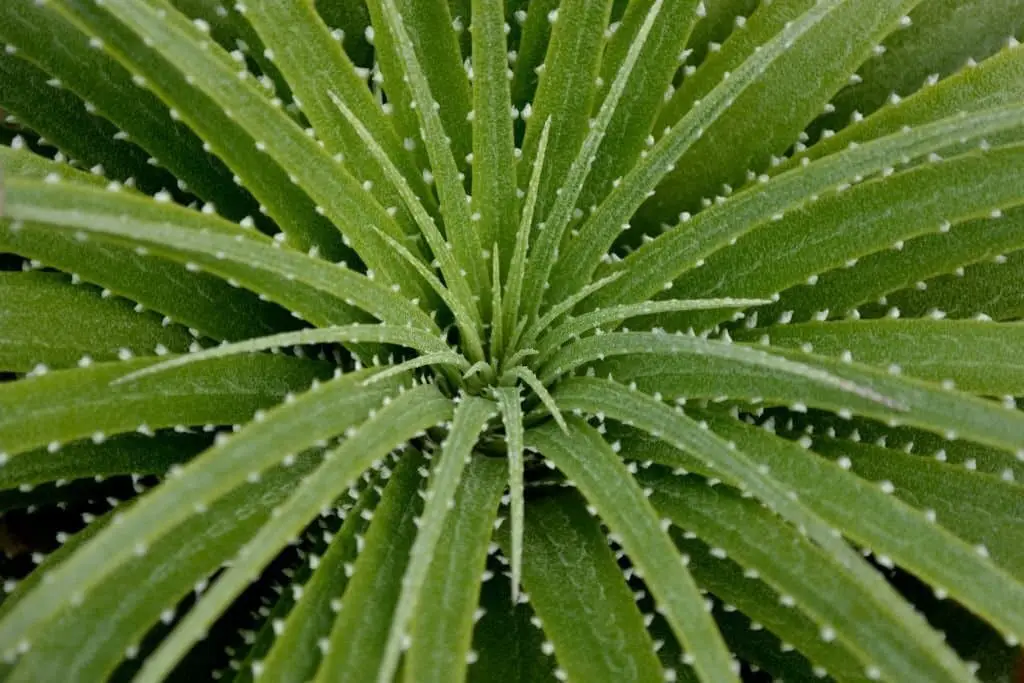
Maguey.
Native to Mexico, agave, also referred to as maguey, has been a cornerstone of traditional medicine for centuries. This succulent’s impressive range of benefits includes alleviating digestive issues, accelerating wound healing, and boasting anti-inflammatory properties. Notably, maguey differs from aloe vera, belonging instead to the lily family. Its unique characteristics allow it to thrive in arid environments, where it can grow up to six feet tall.
The plant’s leaves are robust and fleshy, while its flowers take on hues of green or yellow.
Pineapple plant.

While cacti may not be the first thing that comes to mind when thinking about tropical fruit, pineapple plants are actually a type of succulent that thrives in arid environments. But beyond their unique growing conditions, pineapples have also been prized for centuries for their medicinal properties. In traditional medicine, pineapple is used to treat a range of ailments, including diabetes, stomach issues, and constipation.
Its anti-inflammatory compounds have also led to its use in treating colds, flu, and bronchitis. And it’s not just the fruit itself that’s beneficial – pineapples are also an excellent source of essential vitamins and minerals like Vitamin C, beta-carotene, potassium, and manganese. Furthermore, pineapple contains bromelain, a powerful enzyme capable of breaking down protein.
With its impressive list of health benefits, it’s no wonder why pineapples have remained a staple in many cultures for generations.
Snake Plant.
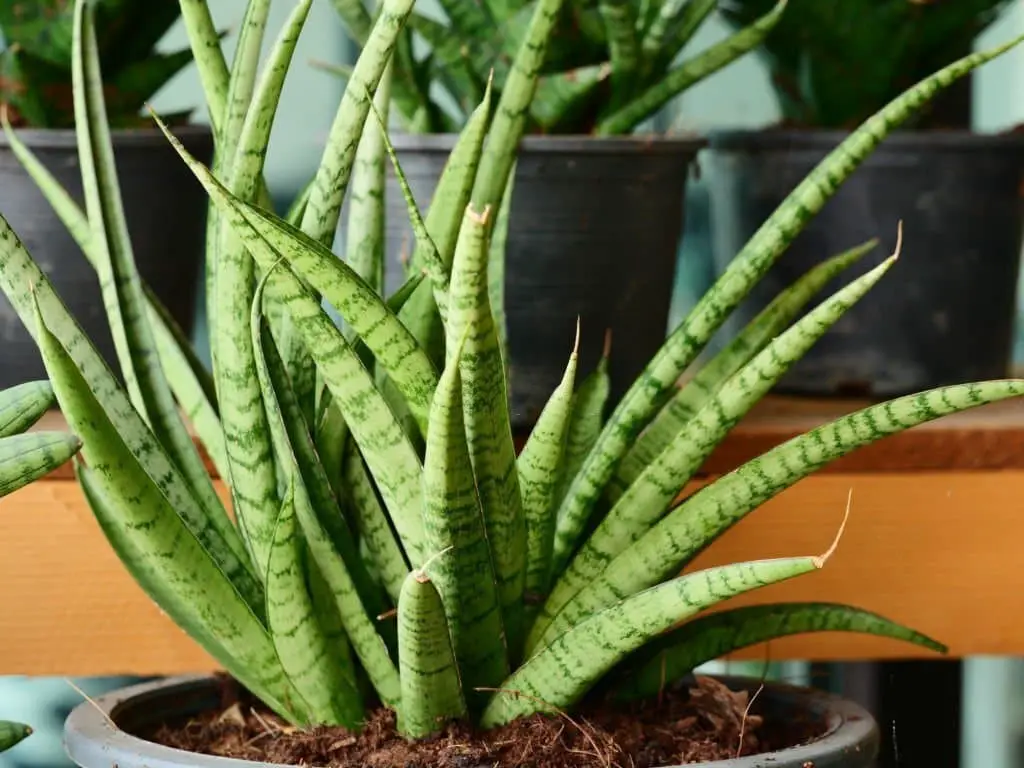
Sansevieria trifasciata, commonly referred to as snake plants, boasts an impressive reputation for being low-maintenance and water-efficient. But that’s not all – these succulents are also renowned for their air-purifying capabilities, effectively filtering out toxic substances like formaldehyde and benzene from the atmosphere. Native to West Africa, the snake plant’s unique appearance, resembling snakes sprouting from the soil, has earned it its distinctive name.
As an added bonus, this resilient species is a perfect choice for novice gardeners, requiring minimal care and attention.
Stapelia.
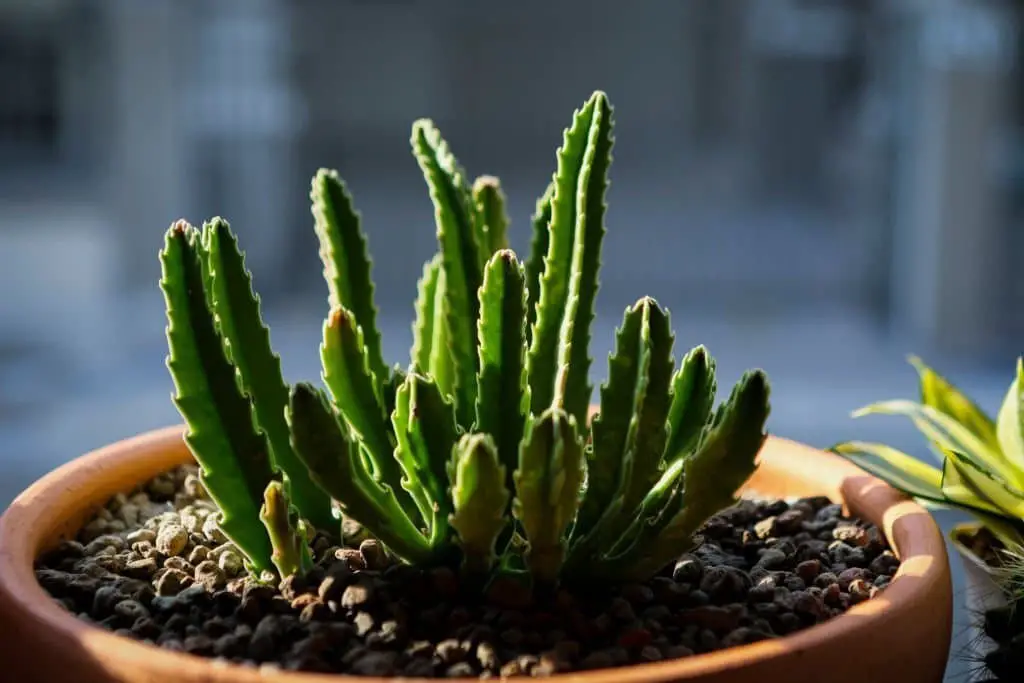
Stapelia, a genus of low-growing, spineless cactus-like plants native to southern Africa, boasts a unique set of characteristics that have evolved to attract pollinators. The flowers, which can be quite large and fleshy, emit a strong, pungent odor reminiscent of rotting meat or carrion, attracting flies that are drawn to the scent. This unusual adaptation is a testament to the genus’ namesake, Johannes Stapel, a 17th century Dutch botanist.
In traditional African medicine, Stapelia species have been employed for various purposes. The flowers and stems are boiled to create a decoction, which serves as a treatment for diarrhea, dysentery, and gastrointestinal disorders. Furthermore, an infusion made from the flowers is used as an eye lotion, while a poultice crafted from pulverized leaves is applied to snake bites, scorpion stings, and other wounds.
Yucca.
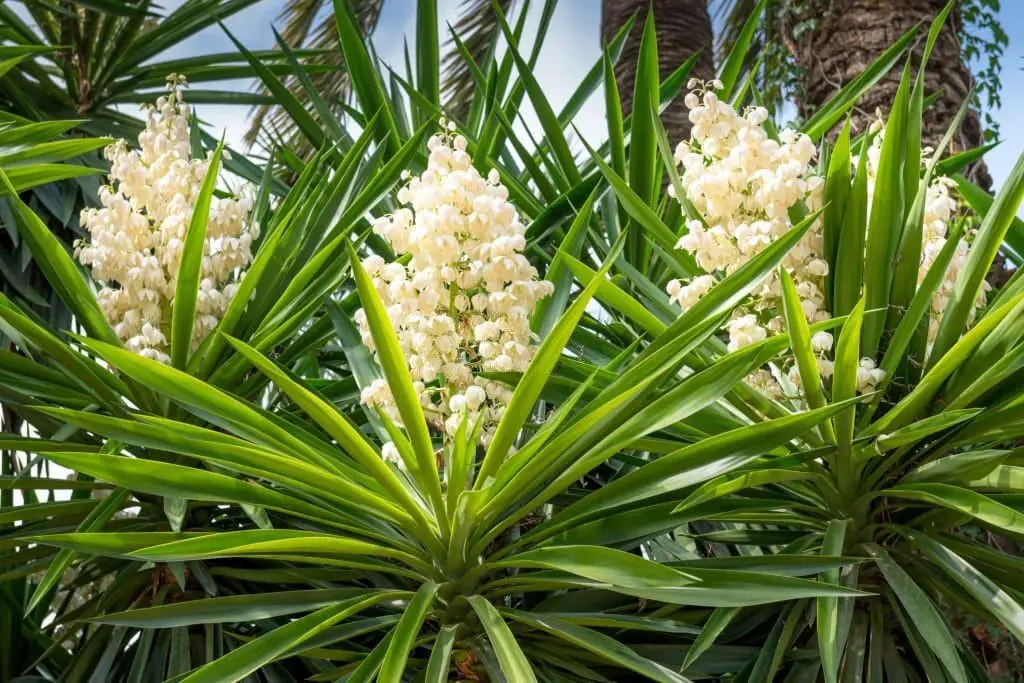
Yucca, a plant with distant ties to the lily family, boasts striking features like long, stiff leaves with saw-toothed edges. Its floral displays are characterized by tall stalks bearing white or pale pink blooms. To thrive, Yucca demands full sun and sandy, well-drained soil, making it an ideal choice for hot, dry sites that require minimal upkeep. Notably, this hardy plant is drought tolerant, deer resistant, and tolerates both heat and cold extremes.
When cultivated indoors as a houseplant, Yucca thrives in bright light conditions. Watering should be done only when the soil has dried out to prevent root rot, a common issue resulting from overwatering. Propagation is possible through seed, offsets, or air layering. Additionally, this versatile plant is also known by several names including Spanish bayonet, aloe yucca, and Adam’s needle.
Poisonous plants that look like aloe vera.
While aloe vera is generally considered safe and beneficial for skin care, there are some poisonous plants that bear a striking resemblance. It’s crucial to develop an understanding of these lookalikes in order to ensure accurate identification.
Aloe Aculeata.
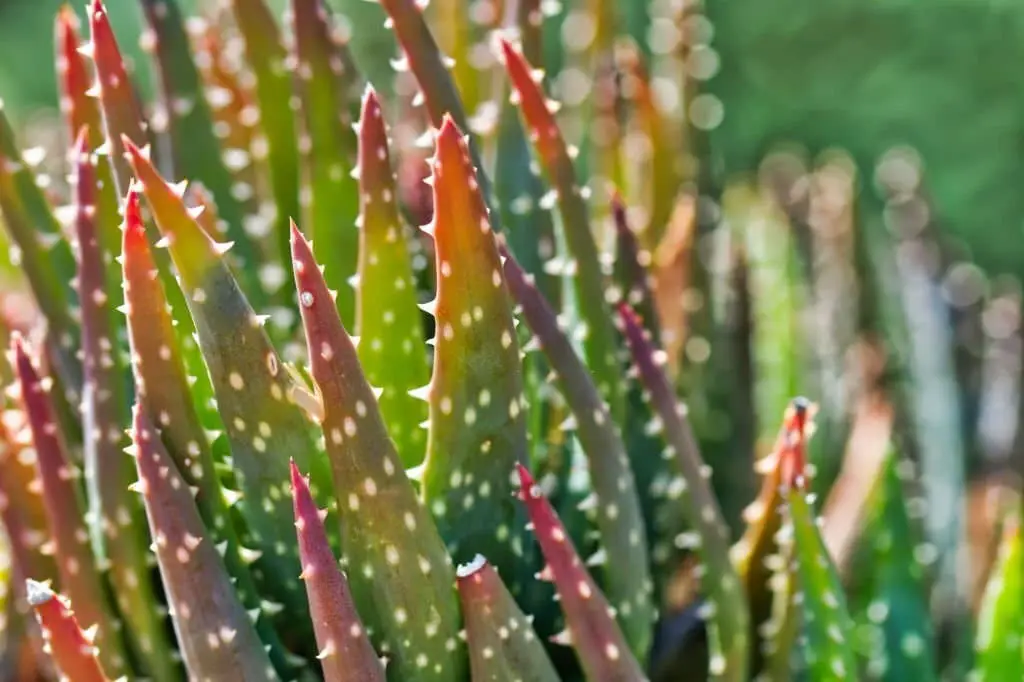
Aloe aculeata, also known as prickly aloe, is an indigenous succulent plant to South Africa. Its upright rosette can reach heights of up to two meters, with leaves that are both thick and fleshy, featuring sharp spines along the edges. During winter, bright yellow or orange flowers bloom on this striking plant. As an ornamental favorite, Aloe aculeata is often utilized in landscaping due to its low-maintenance requirements – it thrives under full sun or partial shade.
However, it’s essential to be aware that the plant contains toxic compounds that can prove harmful if ingested by humans and animals alike. Ingestion symptoms may include stomach pain, vomiting, and diarrhea, making prompt medical attention crucial in such cases.
Aloe Africana.
Native to the African continent, Aloe Africana is a succulent plant characterized by its thick, fleshy leaves and small, bright yellow flowers. However, it’s essential to exercise caution when handling or consuming this plant, as it contains toxic compounds that can cause adverse effects if ingested. Ingestion may lead to symptoms such as vomiting, diarrhea, and abdominal pain.
As a precautionary measure, it’s crucial to keep Aloe Africana plants out of reach of children and pets to prevent accidental exposure.
Aloe Aristata.
Despite its striking resemblance to aloe vera, Aloe Aristata is a succulent plant with some notable differences. Notably, it’s toxic if ingested, leading to unpleasant symptoms like vomiting and diarrhea. To avoid any potential mishaps, it’s essential to recognize the unique characteristics of this plant. Native to South Africa, Aloe Aristata can often be found thriving in gardens.
Its elongated leaves boast a striking green or blue-green hue, punctuated by white spots and sharp teeth along the edges. Furthermore, the plant produces vibrant yellow or orange flowers that add to its visual appeal.
Aloe Ballyi.
Aloe Ballyi, a succulent native to South Africa, is also recognized as African Aloe, Bally’s Aloe, or Mountain Aloe. This plant thrives in rocky terrain, characterized by thick, fleshy leaves bearing a striking green and white spotted pattern.
One of the most notable applications of this plant is its gel-like extract, derived from the leaves, which can be topically applied to treat burns. Additionally, it’s often utilized as an ornamental plant in gardens.
However, it’s crucial to note that Aloe Ballyi is toxic if ingested by humans or animals. The symptoms of poisoning include vomiting, diarrhea, and abdominal pain. In the event you suspect someone has ingested the plant, seek immediate medical attention.
Aloe broomii.
In the family Asphodelaceae, Aloe broomii is a succulent perennial that originates from South Africa. This evergreen species reaches heights of up to 50 cm (20 in) and spreads outwards by 100 cm (39 in), characterized by its blue-green leaves and vibrant yellow flowers. However, caution is advised when dealing with this plant as it contains toxic saponins that can cause severe gastrointestinal distress if ingested.
In fact, the plant’s poisonous properties make it hazardous for both humans and animals. If you suspect your pet has come into contact with Aloe broomii or any part of it, prompt veterinary attention is crucial to ensure their safety.
Aloe chabaudii.
In the vast expanse of Southern Africa, Aloe chabaudii thrives as a unique species within the Aloe genus. Its foliage stands out with striking blue-green leaves adorned with white spots, which also possess a bitter taste when ingested. As summer arrives, this plant bursts into bloom, producing vibrant yellow or orange flowers that add a pop of color to its surroundings. However, it’s essential to exercise caution around Aloe chabaudii, as it poses a risk if consumed by humans and animals alike.
If you’re fortunate enough to have this species in your home, be sure to keep it out of reach from curious children and pets to ensure everyone stays safe.
Aloe cryptopoda.
Aloe cryptopoda, a member of the Aloe genus, boasts a unique characteristic in its specific epithet ‘cryptopoda’, which literally means ‘hidden foot’. This refers to the flower stalk, which is cleverly concealed by the leaves. Native to Ethiopia, Kenya, and Somalia, this intriguing plant thrives in clumps of rosettes that can reach impressive heights of up to 80 cm. The leaves themselves are a striking combination of green and white spots, featuring a toothed margin for added texture.
When it comes to blooming, Aloe cryptopoda produces bright yellow flowers on an inflorescence that can tower as high as 120 cm. As with many plants in the Aloe family, however, caution is advised when handling Aloe cryptopoda, as ingesting its parts can be toxic. If mishandled, symptoms of aloin toxicity may include abdominal pain, diarrhea, and vomiting.
Aloe Elata.
African Aloes, also known as Aloe Elata, belong to the Asphodelaceae family. Originating from Southern Africa’s arid regions, these plants can reach heights of up to four meters and boast striking yellow blooms. Their succulent leaves are notable for their thick, fleshy texture and a gel-like substance within. However, it is crucial to exercise caution when handling this plant, as its toxicity can cause unpleasant symptoms like nausea and vomiting upon ingestion.
In fact, mistaken identity with the more familiar aloe vera is not uncommon, making Aloe Elata an important plant to recognize. If you encounter a plant resembling aloe vera but bearing yellow flowers, it’s likely an Aloe Elata.
Aloe Grandidentata.
Aloe Grandidentata is a succulent species within the Aloe genus, characterized by its remarkable growth potential, which can reach up to four meters in height. Native to Ethiopia, Kenya, Somalia, and Tanzania, this plant thrives in its natural habitats. The leaves of Aloe Grandidentata exhibit striking green markings with white spots, accompanied by spines on their margins. Its vibrant yellow flowers bloom in spikes that can stretch up to two meters long.
However, the plant’s beauty belies a crucial fact: it is poisonous to humans and livestock alike. This toxicity stems from its content of aloin, a compound capable of inducing severe gastrointestinal irritation. Should ingestion occur, it may trigger symptoms including vomiting, diarrhea, and abdominal pain.
Aloe Humilis.
The mountain aloe, also referred to as the aloe of the mountains, is a member of the lily family that hails from southern Africa. This succulent can reach impressive heights of up to two feet tall, its yellow or orange flowers standing out against its green leaves adorned with white spots. It’s essential to note, however, that the mountain aloe contains toxic compounds, and if ingested, it can lead to unpleasant symptoms such as vomiting, diarrhea, and abdominal pain.
Aloe koenenii.
Aloe koenenii, a member of the Asphodelaceae family, is endemic to Ethiopia. This species shares many similarities with its well-known counterpart, Aloe vera. While they share some commonalities, Aloe koenenii is significantly more toxic and can induce severe contact dermatitis in those who come into contact with it.
Aloe lineata.
While some plants may appear identical at first glance, one such example is the succulent that is often mistaken for aloe vera. Despite their similar appearance, they are actually quite different, with the latter being harmless and the former being toxic. The sap of this plant can cause adverse reactions when ingested, including skin irritation and stomach issues. As a result, it’s crucial to keep such plants out of reach of children and pets if you have them in your home.
In contrast, aloe vera is a safe and natural option for treating minor injuries like burns and cuts. Its sap has been used for centuries for this purpose, and its popularity in skincare products is well-deserved given its numerous benefits.
Aloe Peglerae.
Originating from South Africa and Lesotho, this succulent species boasts impressive growth potential, reaching heights of up to two meters. Its leaves, characterized by a striking green hue with white spotting, provide a visually appealing contrast to the vibrant yellow flowers that bloom in clusters. However, it’s essential to exercise caution when handling the plant, as its toxicity poses a risk if ingested.
Ingestion can lead to unpleasant symptoms such as vomiting, diarrhea, and abdominal pain.
Aloe Polyphylla.
The Spiral Aloe, native to Lesotho, is a succulent that has garnered attention for its striking appearance. Its leaves are thick and fleshy, arranged in a unique spiral pattern, which can grow up to five feet tall. While the plant’s beauty is undeniable, it also poses some cautionary notes. The sap of Aloe Polyphylla contains compounds that can cause skin irritation when ingested, leading to unpleasant symptoms like vomiting and diarrhea.
As such, if you’ve brought this plant into your home, it’s essential to keep it out of reach from children and pets to ensure everyone’s safety.
Aloe Ruspoliana.
Within the realm of botanical wonders, Aloe ruspoliana stands out as a unique species. Also known as Russian Aloe, this flowering plant is native to Russia and Uzbekistan, where its striking appearance has captivated the hearts of many. The leaves of Aloe ruspoliana boast a distinctive blue-green hue, adorned with white spots and fiery red margins that add a pop of color to its otherwise rugged appearance.
As summer rolls around, the plant awakens from its dormant state, bursting forth with vibrant yellow or orange blooms that bring joy to those who behold them.
However, Aloe ruspoliana also holds a darker secret. Its sap contains aloin, a compound that can have devastating consequences when ingested. Ingestion of the plant’s sap can lead to severe stomach cramps, diarrhea, and vomiting, making it crucial to seek medical attention promptly if exposure occurs.
Aloe saponaria (Aloe maculata).
In the arid landscapes of southern Africa, Aloe saponaria thrives as a resilient succulent. Its striking appearance is characterized by long, slender leaves adorned with white spots that provide natural camouflage in its dry, rocky habitats. However, caution is advised when handling this plant, as its sap contains toxic compounds that can have severe consequences if ingested, including stomach cramps, vomiting, and diarrhea.
Aloe striata.
Aloe striata is a succulent native to Southern Africa, belonging to the Aloeaceae family, which also includes the well-known Aloe vera and Aloe ferox. This plant stands at an impressive 30-60 cm in height, characterized by green leaves featuring striking white stripes. Its vibrant yellow or orange blooms typically emerge during the summer months.
While aesthetically pleasing, Aloe striata is poisonous to both humans and animals if ingested.
The plant contains aloin, a bitter compound that can induce vomiting and diarrhea upon consumption. In severe cases, this toxic substance can lead to liver damage or even fatal consequences. If you come into contact with the plant, it’s crucial to wash your hands thoroughly with soap and water to prevent any potential harm.
Aloe variegata
In the vast realm of botanical wonders, one species stands out for its striking appearance: Aloe variegata. Hailing from South Africa, this flowering plant boasts an array of green leaves speckled with white spots – a unique characteristic that sets it apart from its peers. But that’s not all; the flowers of Aloe variegata are a radiant yellow, and they’re supported by stalks that can reach up to 60 centimeters in height.
Conclusion
With this comprehensive list, you’ll never have to settle for a substitute again! When you’re on the hunt for a plant with an aloe vera-like appearance, look no further. From succulents to cacti, we’ve got the lowdown on all the plants that bear a striking resemblance to our beloved aloe vera. Before making your purchase, be sure to do your due diligence and research each option to ensure it’ll thrive in your unique climate and environment.
Related Posts
To pursue a career in plant breeding, you’ll need to follow a series of steps. First, gain a solid understanding of botany and genetics by earning a bachelor’s degree in a relevant field such as horticulture or biology. This foundation will serve as the basis for your future studies. Next, consider pursuing a graduate degree, which can lead to more advanced knowledge and qualifications.
In addition to formal education, plant breeding also requires hands-on experience, so seek out internships or volunteer opportunities at nurseries, botanical gardens, or research institutions. These experiences will help you develop practical skills and build connections within the industry. Finally, stay current with ongoing research and developments in the field by attending conferences, workshops, and seminars.
With dedication and hard work, you can successfully navigate the steps to become a plant breeder.


